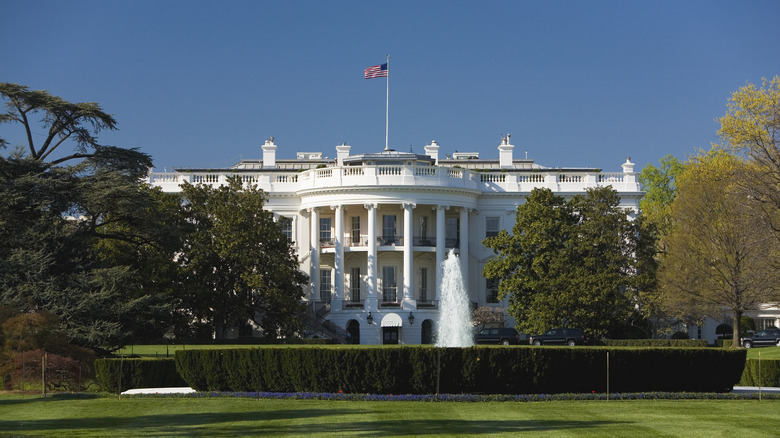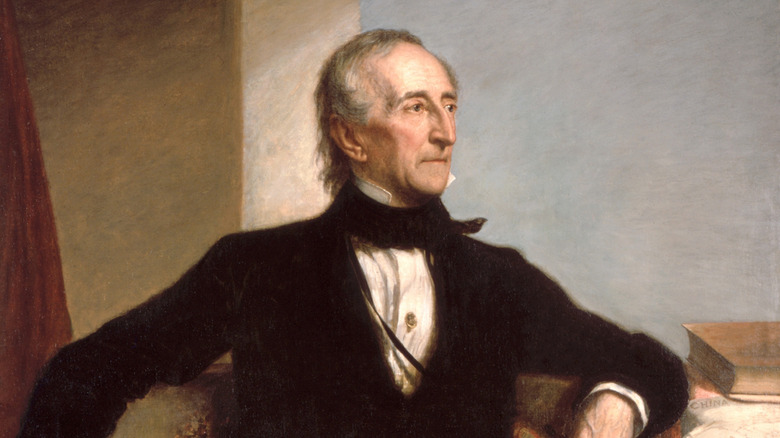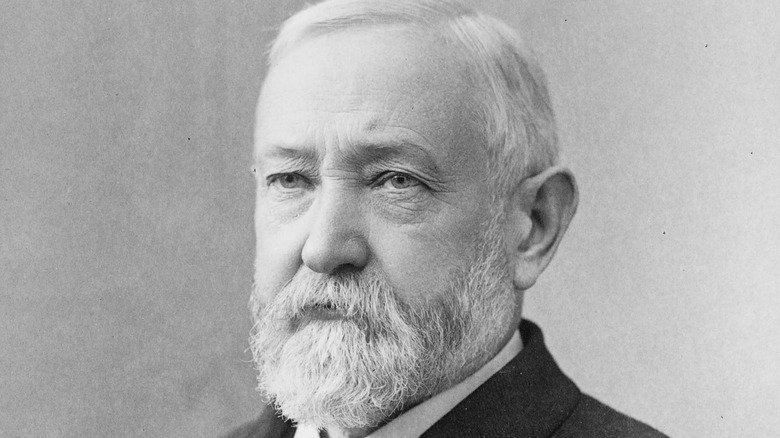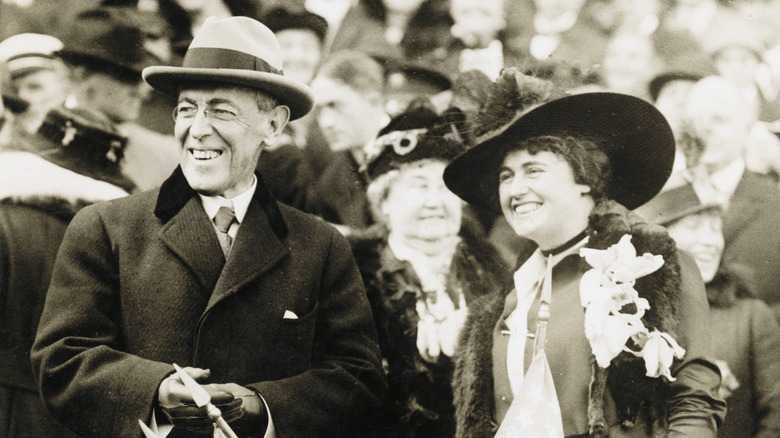Presidents Whose Wives Died While In Office
It's helpful to remember that presidents are just as human as the rest of us. They wake up, hit the john, shower, have breakfast (at the White House, of course), maybe check their phone, have a meeting, get a nose itch, have a bad hair day, etc. In their personal lives they have family, friends, sometimes keep a pet, and maybe meet a romantic partner and get married. Except James Buchanan (1857 to 1861), the only president out of 47 to remain a perpetual bachelor in and out of office.
Every other president has either, 1) Been married when they took office, or, 2) Got married while in office. Married presidents, like other partners in supportive relationships, have the benefit of sharing the difficulties of office and having someone to confide in. Unmarried heads of state can do the same, but with family, friends, or professional associates. And even though attitudes toward the marital status of presidents have changed over time, there's definitely a reason why they're usually married, as far as public perception is concerned.
And yet, illness and tragedy can strike a president the same as anyone else. Out of the three who married while in office — John Tyler (1841 to 1845), Grover Cleveland (1885 to 1889, 1893 to 1897), and Woodrow Wilson (1913 to 1921) — two of them remarried after their first wives died during the presidency. Benjamin Harrison (1889 to 1893), meanwhile, lost his wife while president and remarried after his term finished.
John Tyler's wife Leticia died of a stroke
The presidency of John Tyler was an unusual one, to say the least. He was vice president to William Henry Harrison and became the ninth United States president in 1841. Harrison died after only 32 days in office of a common cold that developed into pneumonia, although research published in the Infectious Diseases Society of America concluded he died of enteric fever (aka typhoid fever). But no matter the cause, his running mate and vice president, John Tyler, stepped into command in 1841. His critics dubbed him "His Accidency."
Tyler was married to his wife, Leticia, who at the time he took office was largely unable to move after having a stroke in 1839. The two had been married since 1813, when John Tyler was 23 years old, and Leticia had given birth eight times — seven children survived. She mostly kept to herself in her private quarters and didn't participate in social events. But as The White House quotes her daughter-in-law, Priscilla Cooper Tyler, saying at the time that she "attends to and regulates all the household affairs and all so quietly that you can't tell when she does it,"
Leticia carried on like this for only about a year and died in 1842 of another stroke. She was the first and youngest first lady to die in the White House at age 51. President Tyler remarried to Julia Gardiner in 1844 following a relationship kept secret from the public, making him the first president to get married while still in office.
Benjamin Harrison's wife Caroline died of tuberculosis
Dubbed "Little Ben" by political opponents because he was only 5-feet, 6-inches tall, Benjamin Harrison served as Colonel of the 70th Volunteer Infantry during the U.S. Civil War. According to the White House, he ran on a presidential campaign focused on "Indians, homesteaders, and Civil War veterans." He beat Grover Cleveland in 1888 after losing the popular vote but winning the Electoral College 233 to 168. Then, in 1892, Cleveland beat him to become the first president to win non-consecutive terms.
Harrison married Caroline Scott in 1853, and they had a daughter and son together. Gifted on the artistic and musical front, Caroline was a dancer, pianist, and music teacher. In 1890, she founded the National Society of the Daughters of the American Revolution to celebrate the 100-year anniversary of George Washington's presidency. Sadly, she died in 1892 of tuberculosis contracted during the previous winter.
Harrison didn't remarry while in office — he waited until after his term had ended. He married Mary Dimmick in 1896, his deceased wife's niece who was herself a widower. On the Raab Collection is a very heartful letter Harrison wrote to his son asking for his understanding about the marriage. "It is natural that a man's grown children should not be pleased with a second marriage," he wrote. "It would not have been possible for me to marry one I did not very highly respect and very warmly love. But my life now, and made more as I grow older, is and will be a very lonely one and I cannot go on as now."
[Featured image by Greenmars via Wikimedia Commons | Cropped and scaled | CC BY-SA 3.0]
Woodrow Wilson's wife died of Bright's disease
Woodrow Wilson presided over the United States as its commander-in-chief during a very critical juncture (1913 to 1921) that overlapped with World War I, and he is almost universally regarded as one the U.S.' finest presidents. He successfully led the country through WWI, won the Nobel Peace Prize in 1919, envisioned and founded the League of Nations (the precursor to the United Nations) in 1920, and presided over the passing of the U.S. Constitution's 19th Amendment, which ensures the right to vote for any sex.
Wilson married Ellen Louise Axson — a minister's daughter — in 1885, and the two had three daughters of their own. Ellen raised the kids at home while Wilson taught at Bryn Mawr College and Princeton University before trying his hand at politics. Drawn to art, Ellen was caught between supporting her family and caring for her father, who experienced mental illness. In 1914, during Wilson's first term, she died of Bright's disease, a blanket term for a group of kidney diseases that causes symptoms ranging from edema (fluid in tissue) to hypertension and even blindness.
Wilson remarried in 1915 to Edith Bolling Galt, a choice that proved wiser than anyone could have realized. After he suffered a stroke in 1919, she acted behind the scenes as the nation's "secret president" and managed aspects of administration short of executive decision-making as part of her "stewardship," as The White House quotes her. Wilson himself died in 1924, three years after his second term ended.



